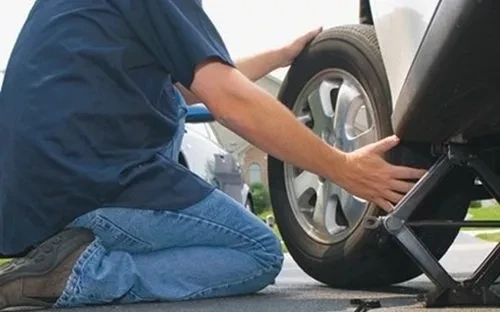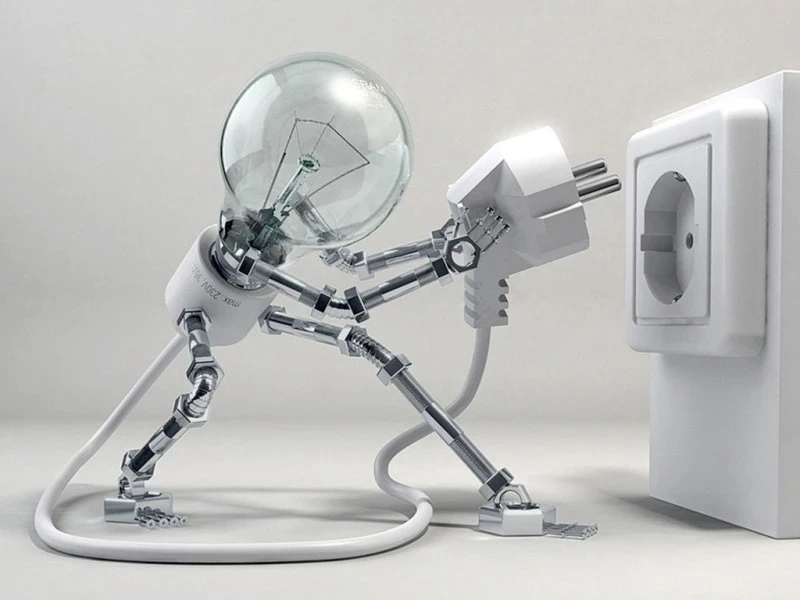
Changing wheels depending on the season is a common practice for most drivers. Although many prefer to trust this task to specialists, an increasing number of car owners are deciding to handle it themselves. All that is needed is a flat surface, a basic set of tools, and a little free time, reports 32CARS.RU.
According to experts, the first step is to choose a flat area for work. Important tools for changing a wheel include a lug wrench, a jack, a metal brush, and a torque wrench. Make sure the car is on a flat surface, the handbrake is engaged, and the transmission is in gear. First, loosen the bolts, then place the jack under the frame's structural elements and lift the car. After that, completely unscrew the bolts and remove the wheel, cleaning the hub of dirt and rust beforehand.
When installing a new wheel, it is recommended to tighten the bolts alternately in a crisscross pattern to avoid warping. Use a torque wrench to tighten the bolts with the force specified by the manufacturer. After driving approximately 50 kilometers, you should check the tightness again.
It is also important to remember proper storage of wheels. If the tires are already mounted on rims, they should be laid flat. Vertical storage is possible if the wheels are stored separately from the rims.
It is crucial to use the factory mounting points when installing the jack, which are marked on the car's body. Self-installation is only suitable for wheels that are already on rims; otherwise, a balance check is necessary, which can only be performed by professionals at a service station.
Changing wheels is a routine procedure for every car owner, but it can lead to various problems with tires and suspension. At first glance, the process seems simple: lift the car, remove the old wheels, install new ones, and tighten the fasteners. But it is in the details that the reasons lie for why tires can wear out twice as fast as they should.
The main mistakes that are often not mentioned even in auto services can be minor, but they ultimately lead to serious consequences and increase the owner's expenses.
Improper wheel replacement is a common cause of accelerated tire wear. Even if the process takes place in a professional service, any violations of technology can lead to uneven wear, micro-cracks, and deterioration of grip. The risk of mistakes is significantly higher when changing tires independently. Modern cars are becoming increasingly sensitive to the condition of wheels and suspension, and old habits no longer work.
One important aspect is the correct torque for tightening bolts or nuts. Many drivers believe that the tighter they fasten the connections, the better, but this can lead to damage to the rim or hub, causing vibrations and uneven tread wear. Insufficient tightening can be even more dangerous, as it leads to loosening of the fasteners while driving. Using a torque wrench is not a recommendation but a necessity, especially for modern cars where tolerances are critically important.
Another common mistake is ignoring wheel balancing. Even if the tires were balanced previously, after removal and installation, the uniformity of mass distribution may change. A slight imbalance can cause constant vibrations that negatively affect comfort and the condition of the suspension. Hub bearings suffer particularly, and their replacement will cost significantly more than rebalancing.
Don't forget to check tire pressure immediately after replacement. Even if everything was fine before removal, leaks may occur during installation. Insufficient pressure leads to accelerated tire wear and increased fuel consumption, while overinflated tires worsen grip on wet roads. Incorrect pressure can also negatively affect the operation of stability and braking systems, which is critical for modern cars with pressure monitoring sensors.
Some drivers forget about the correct direction of the tread and the positioning of wheels on axles. Tires usually have arrows indicating the direction of rotation and markings "Inside" and "Outside." Violating these rules worsens grip and accelerates wear. It is also worth considering that front tires wear out faster than rear ones, and proper rotation can extend the lifespan of the entire set.
It is essential not to ignore the need to check the suspension geometry after changing wheels. Even a slight impact during installation can change the angles of wheel alignment, leading to uneven tread wear. Regular checks of alignment angles, especially after seasonal changes, are crucial for keeping tires in good condition.
Finally, care during the removal and installation of wheels also matters. Improper use of tools can damage the tire bead or rim, which over time can lead to slow air leaks and loss of airtightness, especially for alloy wheels.
Storage conditions for tires between seasons also affect their lifespan. Storing in a damp place, under direct sunlight, or near heat sources can negatively impact their condition. Even with minimal mileage, tires can crack and lose elasticity, making them unsuitable for use. Many drivers underestimate the importance of proper storage, even though it can significantly extend the lifespan of sets.
In conclusion, the lifespan of tires depends not only on their manufacturer or price but also on the quality of replacement and maintenance. Even minor mistakes can shorten the service life of rubber. It is important to pay attention to all aspects—from the torque of bolts to checking alignment and storage conditions. This approach will not only extend the lifespan of tires but also enhance road safety, ensuring stable grip and predictable vehicle behavior in all conditions.























